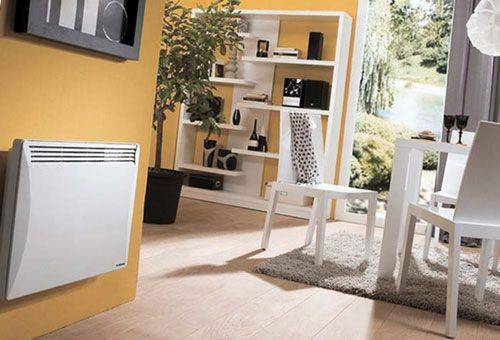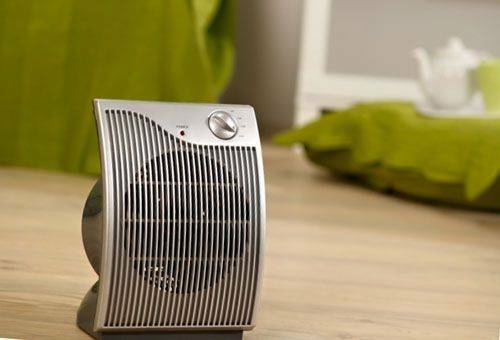Contents:
- Purpose of heaters and their basic classification
- Available and most simple oil devices
- Modern electric heaters
- Cheap and most economical fan heaters
- Efficient but expensive infrared devices
- Moments to look for when choosing household appliances
Modern manufacturers offerMany models of heaters as an additional source of heat in a residential area. Against this background many consumers have a question, which of the devices is better in terms of energy saving, safety, temperature regulation. Before choosing a suitable model, based on its price, it is necessary to evaluate many factors.

First of all, the area of the apartment, the already existing system for its heating, the features of the situation are taken into account. Often, trying to save, the owners acquire a thing that does not correspond to the situation and then suffer with it until they approach the issue more responsibly.
Assignment of heaters and their basic classification
Before determining what type of heater to purchase, you need to make sure that it will be the best solution in the situation with indoor cold. Strongly blown apartments with numerous windows or slots can not be heated even with the help of the most powerful device. The heat will literally go to the temperature rise on the street, and not in the room. For this reason, first you need to eliminate all possible sources of cold air, insulate windows and doors.

After this, you can choose the appropriate device based on their classification by type of work:
- Convection. Heat the air around itself, which is then mixed with the cold air in the room, increasing its temperature.
- Infrared. These heaters emit long waves, causing an increase in the temperature not of air, but of walls, floor and ceiling.
- Fan heaters. Create a pleasant warm wind that can be directed to the problem areas of the room.
Each of the directions has its own types, possessing advantages, disadvantages and characteristics.
Accessible and maximally simple oil devices
The oil device and its configurations were actively used to heat the apartment at the end of the last century. The device is represented by a design that looks like a battery. It is filled not with water, but with mineral oil, which retains heat better. The liquid is heated using a special element, which operates from electricity. The more sections the oil heater has, the higher its efficiency.

The temperature rise in the room occurs according to the principle of convection. In addition, wave radiation is noted, but its level is negligible. To choose a suitable oil-filled room for a particular room, it must be taken into account that for heating of 10 m² of the area, 1 kW of power will go off. If the ceiling height is more than the standard value of 2.7 m, you will have to increase the power.
The merits of these heaters include their low cost, the possibility of continuous continuous operation and the fact that the oil unit can be freely moved through the space of the apartment. If the electricity is suddenly turned off, the heater will still heat the air for a while due to hot oil.

Among the shortcomings of the device most often the owners mention the following points:
- The oil convector is heating for a long time, sometimes this process takes more than an hour.
Tip: You can minimize this problem if you select a combined product with a fan heater. Heating the room will occur much faster, which will allow you to count on the rapid manifestation of the desired result.
- The case of the device is quite heavy and massive, the devices for warming up impressive areas take up a lot of space.
- The surface of the device can become very hot, which is dangerous for people and furniture.
- This is not the most economical option, its average power is 2 kW.
In addition, the oil device will not be the best solution for an apartment with young children and allergies. Because of the constant mixing of air in the atmosphere, dust particles will always be suspended.
Modern electric heaters
Also work on the principle of convection. First, cold air is sucked through the holes in the bottom of the case, which is heated and released into the atmosphere. The effectiveness of the approach depends on the area of the heating element( TEN).The maximum warming effect is achieved by increasing the area of the ten by creating ribs on its surface.

Given the specifics of the work, these heaters have several advantages:
- At not the highest price, they have an impressive period of uninterrupted service.
- The case is rather thin, so the device does not take up much space. Its surface does not heat up to out-of-bounds, so relatively safe devices can be installed even in the nursery.
- The product heats up quickly, in just a few minutes, and does not make noise.
- Modern models are equipped with automatic on and off functions. They are protected from overheating.
With all this, you can identify a couple of shortcomings. A large area of such a device does not warm up. At the very beginning of the work, warming up the air takes a long time.
Cheap and most economical fan heaters
These warm air inflow devices are best suited for emergency room heating. To select a suitable instrument, you need to compare the size of its blades with the area of the room. The more they are, the more impressive and effective the device. It is difficult to find an option more economical. Not only is this the cheapest unit, it also spends no more than 1.5 kW of power for heating a room of 25 m².When the device overheats, the device switches off automatically. The devices themselves are light and can be moved from room to room if necessary.

There are some disadvantages for fan heaters. The heaters are too noisy, picking up clouds of dust, and can not work too long, quickly overheating.
Efficient but expensive infrared devices
For regular use today, heaters equipped with a lamp emitting infrared waves of a long type are increasingly choosing. They are better than other devices warm up the room due to the fact that they act on surrounding objects, including human beings. Regardless of which type of lamp is installed in the device, its operation is imperceptible to others. Such products are usually fastened to a wall, floor or ceiling. The main thing is that this surface does not go out into the street, otherwise heat will be partially spent for nothing. For heating 10 m² in the room takes 1.5 kW of power, and on the balcony - 1 kW.

Among the advantages of the device is its quietness, absence of the effect of dust dispersion. Heat around the room is distributed evenly, and does not accumulate in a particular area. The included device starts to instantly raise the temperature, the switched off does not need cooling.
Before choosing an infrared heater, it is necessary to evaluate its shortcomings. They include the high cost of products and the fact that a person is very warm from such an impact, which can even lead to overheating.
Moments to look for when choosing household appliances
Whatever type of heater is not noticed, you need to remember the following important points that can affect the final solution:
- Even the safest and most advanced device will dry the air in the room. Even very cheap devices do not burn oxygen in the atmosphere.
- Area of influence - the starting parameter when choosing a convector.
- For dusty rooms, infrared heaters are best suited, for a nursery - a product that is not afraid of a protective cover, with high humidity you need to pay attention to appliances with water protection.
- Powerful device - not the best solution for a small room. Although it will warm the air, but it can quickly fail.
- If the heater smells strongly when heated, this indicates a low quality of the materials used.
The service life of the convector is noticeably prolonged, if you do not use it for drying things, put it in a separate outlet, use strictly according to the instructions. Such devices should not be placed in the immediate vicinity of windows and any pieces of furniture to prevent their ignition.



